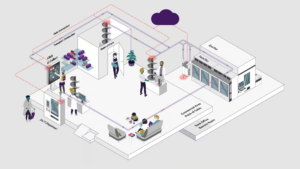
- Construction change order software streamlines and automates the change order process.
- Change orders can cause project delays and financial implications.
- Manual change order management is prone to errors and lacks visibility.
- Construction change order software improves accuracy and efficiency.
- It provides enhanced visibility, accountability, and communication.
- Key features to look for include comprehensive interface, integration capabilities, and robust reporting.
- Usability and customization options are important considerations.
- Implementing the software requires stakeholder buy-in and comprehensive training.
- Best practices for integration include clear guidelines and regular communication.
- Construction change order software increases efficiency, saves costs, and improves communication and risk management.
Why Construction Change Order Software is Crucial for Project Success
Construction projects are complex endeavors that often involve changes and modifications to the original plans. These changes, known as change orders, can have a significant impact on project timelines, budgets, and overall success. In the past, managing change orders manually was a tedious and time-consuming process that often led to errors and delays. However, with the advent of construction change order software, project teams now have a powerful tool to streamline and automate this process.
The Impact of Change Orders on Construction Projects
Change orders are a common occurrence in construction projects. They occur when there is a need to modify the original plans due to various factors such as design changes, unforeseen site conditions, or client requests. While change orders are often necessary to ensure project success and meet client expectations, they can also present challenges and risks.
One of the major impacts of change orders is the potential for project delays. Each change order requires additional time for evaluation, approval, and implementation, which can disrupt the project schedule. This can lead to increased costs, as contractors may incur penalties for late completion or have to reschedule resources and subcontractors.
Change orders also have financial implications. Depending on the nature and extent of the change, additional materials, labor, and equipment may be required, resulting in increased costs. Change orders can also impact the profitability of a project, as contractors may need to absorb certain costs or negotiate with clients for additional compensation.
The Challenges of Managing Change Orders Manually
Traditionally, managing change orders was a manual process that involved paperwork, spreadsheets, and manual calculations. This approach presented several challenges and risks for construction project teams.
Firstly, manual change order management was prone to errors. Miscommunication, data entry mistakes, and misplaced documents could lead to inaccurate information and misunderstandings among project stakeholders. These errors could result in delays, disputes, and costly rework.
Furthermore, managing change orders manually was time-consuming. Project teams had to spend hours sorting through paperwork, tracking change orders, and manually updating spreadsheets. This manual effort took away valuable time that could be better spent on actual project tasks.
Another challenge of manual change order management was the lack of visibility and accountability. Without a centralized system, it was difficult to track the status and progress of change orders. This lack of visibility made it challenging for project teams to make informed decisions, prioritize tasks, and allocate resources effectively.
The Advantages of Utilizing Construction Change Order Software
Construction change order software offers numerous advantages over manual methods for managing change orders. By leveraging technology and automation, project teams can streamline the change order process, improve communication, and enhance project efficiency.
One of the key benefits of construction change order software is improved accuracy. With automated calculations and digital record-keeping, the likelihood of errors and misunderstandings is significantly reduced. Project stakeholders can access up-to-date information and collaborate more effectively, minimizing the risk of costly mistakes.
Another advantage of using change order software is increased efficiency. The software automates repetitive tasks, such as generating change order forms and updating project documentation. This automation saves time and allows project teams to focus on more critical project activities, ultimately speeding up the change order process and reducing project delays.
Construction change order software also provides enhanced visibility and accountability. With a centralized system, project teams can easily track the status of change orders, monitor approvals, and view the entire change order history. This transparency improves communication and enables better decision-making, as project stakeholders have access to real-time information and can address issues promptly.
Identifying the Right Construction Change Order Software
Key Features to Look for in Construction Change Order Software
When selecting construction change order software, it is essential to consider key features that are crucial for effective change order management.
Firstly, the software should provide a comprehensive and user-friendly interface for creating, submitting, and tracking change orders. It should offer customizable templates and forms to capture all relevant information, such as the scope of the change, estimated costs, and required approvals.
Integration capabilities are another important feature to consider. The software should seamlessly integrate with other project management tools and systems, such as accounting software and document management platforms. This integration ensures a smooth flow of information and eliminates the need for manual data entry or duplicate record-keeping.
Furthermore, construction change order software should have robust reporting and analytics capabilities. Project teams should be able to generate detailed reports on change order status, costs, and trends to monitor project performance and make data-driven decisions. This insight is invaluable in identifying areas for improvement and minimizing risks associated with change orders.
How to Evaluate the User-Friendliness of Construction Change Order Software
Usability is a critical factor in choosing the right construction change order software. The software should have an intuitive interface that is easy to navigate, even for users with limited technical knowledge. It should offer clear instructions, tooltips, and contextual help to guide users through the various steps of the change order process.
It is also beneficial to take advantage of free trials or demos of the software to assess its user-friendliness. This allows project teams to test the functionality and interface, ensuring that it meets their specific needs and preferences. User feedback and reviews from other construction professionals can also provide insights into the software’s ease of use.
The Importance of Customization Options in Construction Change Order Software
Every construction project is unique, and the change order process may vary depending on project requirements and contractual agreements. Therefore, it is crucial to select construction change order software that offers customization options.
The software should allow project teams to tailor the change order forms, workflows, and approval processes to align with their specific project needs. Customization options can include adding project-specific fields, defining approval hierarchies, and setting up automated notifications and reminders.
By customizing the software to fit their project requirements, construction teams can ensure that change order management aligns with their established processes and workflows.
Implementing Construction Change Order Software in Your Organization
Getting Buy-In from Stakeholders for Change Order Software Adoption
Implementing construction change order software requires buy-in from key stakeholders, including project managers, executives, and field personnel. It is essential to clearly communicate the benefits of the software and its potential to improve project outcomes.
One way to gain buy-in is by highlighting the drawbacks and limitations of the current manual change order process. By demonstrating how the software can address these challenges and streamline workflows, stakeholders are more likely to see the value in adopting the software.
It is also helpful to involve stakeholders in the selection process. Engage them in evaluating different software options and gathering their input on features and functionalities. This involvement not only increases their ownership and commitment to the software but also ensures that the chosen software meets their specific needs.
Training and Onboarding Strategies for Effectively Implementing Construction Change Order Software
Effectively implementing construction change order software requires comprehensive training and onboarding strategies. A structured training program should be developed to familiarize users with the software’s functionality and best practices for change order management.
The training program can include online tutorials, interactive workshops, and hands-on exercises to ensure that users understand how to navigate the software and utilize its features effectively. It is also beneficial to provide ongoing support and resources, such as user manuals, FAQs, and access to a helpdesk, to address any questions or issues that may arise during the implementation process.
Additionally, involving key stakeholders in the training and onboarding process can foster a sense of ownership and engagement. This involvement can include demonstrations, user feedback sessions, and collaboration on developing project-specific workflows and processes.
Best Practices for Integrating Change Order Software into Existing Workflows
Integrating change order software into existing workflows requires careful planning and collaboration among project teams. It is essential to assess current processes and identify areas that can be streamlined or automated with the software.
One best practice is to establish clear guidelines and protocols for change order management. Project teams should define roles and responsibilities, document processes, and communicate expectations to ensure a smooth transition to the new software.
Regular communication is also crucial during the integration process. Project teams should hold meetings or workshops to address any challenges or concerns and provide updates on the progress of the implementation. This open dialogue encourages collaboration and allows for adjustments to be made as needed.
The Benefits of Construction Change Order Software
Increased Efficiency and Cost Savings with Construction Change Order Software
Construction change order software offers significant efficiency gains and cost savings for project teams. By automating manual tasks and streamlining workflows, project teams can save valuable time and resources that can be allocated to other project activities.
The software’s ability to generate accurate and detailed change order forms and documentation reduces the risk of errors and misunderstandings. This accuracy minimizes the need for costly rework and ensures that change orders are executed correctly the first time, saving both time and money.
Improved Communication and Collaboration Among Project Stakeholders
Effective communication and collaboration are essential for successful change order management. Construction change order software facilitates better communication and collaboration among project stakeholders by providing a centralized platform for sharing information and updates.
Project teams can easily track the status of change orders, view comments and approvals, and communicate directly within the software. This real-time collaboration improves transparency, reduces miscommunication, and allows for prompt resolution of any issues or disputes that may arise during the change order process.
Enhanced Risk Management and Documentation with Change Order Software
Risk management is a critical aspect of construction projects, and change orders can introduce new risks and uncertainties. Construction change order software provides enhanced risk management capabilities by enabling project teams to identify, assess, and mitigate risks associated with change orders.
The software’s reporting and analytics features offer valuable insights into change order trends, costs, and potential risks. This information allows project teams to proactively address issues, anticipate challenges, and establish contingency plans to minimize disruptions and maintain project success.
Furthermore, the software’s centralized documentation and record-keeping capabilities ensure that all change order-related information, including approvals, documentation, and communication logs, are organized and easily accessible. This documentation serves as a valuable reference for future reference, audit purposes, and dispute resolution, if necessary.
In conclusion, construction change order software is a crucial tool for project success. It streamlines and automates the change order process, improves communication and collaboration among project stakeholders, and enhances risk management and documentation. By identifying the right software, implementing it effectively, and leveraging its benefits, construction project teams can navigate change orders more efficiently and achieve better project outcomes.
FAQ
Question: What is construction change order software? – Construction change order software is a tool that streamlines and automates the process of managing change orders in construction projects. It helps project teams to efficiently handle modifications to the original plans.
Question: How do change orders impact construction projects? – Change orders can cause project delays and financial implications. Each change order requires additional time for evaluation, approval, and implementation, which can disrupt the project schedule. It can also lead to increased costs, as additional materials, labor, and equipment may be required.
Question: What are the challenges of managing change orders manually? – Managing change orders manually is prone to errors, lacks visibility, and is time-consuming. Miscommunication, data entry mistakes, and misplaced documents can lead to inaccuracies and misunderstandings. The lack of a centralized system makes it difficult to track the status and progress of change orders.
Question: What are the advantages of using construction change order software? – Construction change order software improves accuracy and efficiency. It reduces errors and misunderstandings by automating calculations and providing digital record-keeping. It also saves time by automating repetitive tasks and provides enhanced visibility and accountability through a centralized system.
Question: What key features should be considered when selecting construction change order software? – When selecting construction change order software, it is important to consider features such as a comprehensive interface for creating and tracking change orders, integration capabilities with other project management tools, and robust reporting and analytics capabilities.
Question: How can the user-friendliness of construction change order software be evaluated? – The user-friendliness of construction change order software can be evaluated by considering factors such as the intuitiveness of the interface, the availability of clear instructions and contextual help, and the feedback and reviews from other construction professionals.
Question: Why are customization options important in construction change order software? – Customization options in construction change order software allow project teams to tailor the software to fit their specific project needs. This includes adding project-specific fields, defining approval hierarchies, and setting up automated notifications and reminders.
Question: What are best practices for implementing construction change order software in an organization? – Implementing construction change order software requires stakeholder buy-in and comprehensive training. It is important to communicate the benefits of the software, involve stakeholders in the selection process, and provide structured training programs and ongoing support. Clear guidelines and regular communication are also essential for successful integration into existing workflows.
Useful Resources:
- Construction Dive
- Construct-Ed
- Construction Executive
- ConstructConnect
- Construction Drive
- Construction World
- Building Design + Construction
- Builder Online





